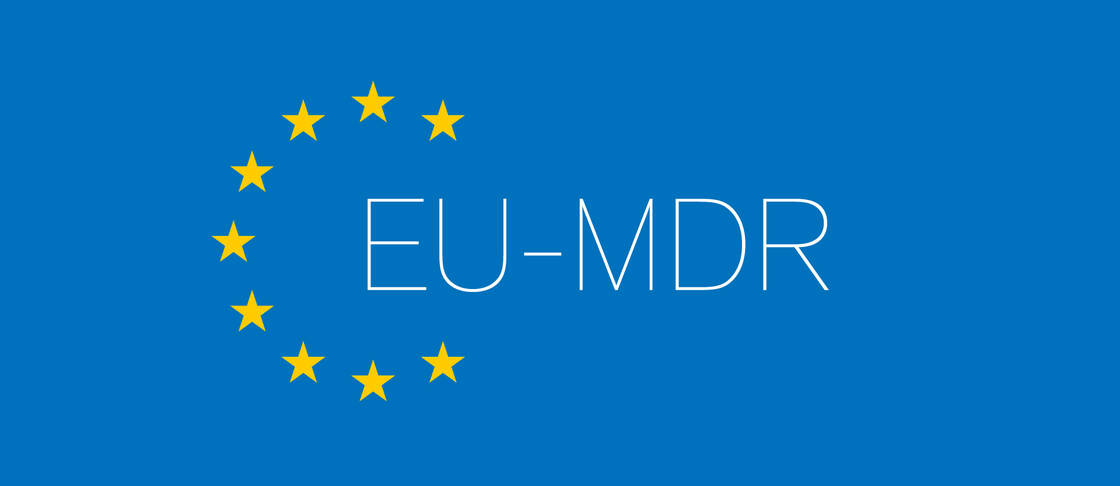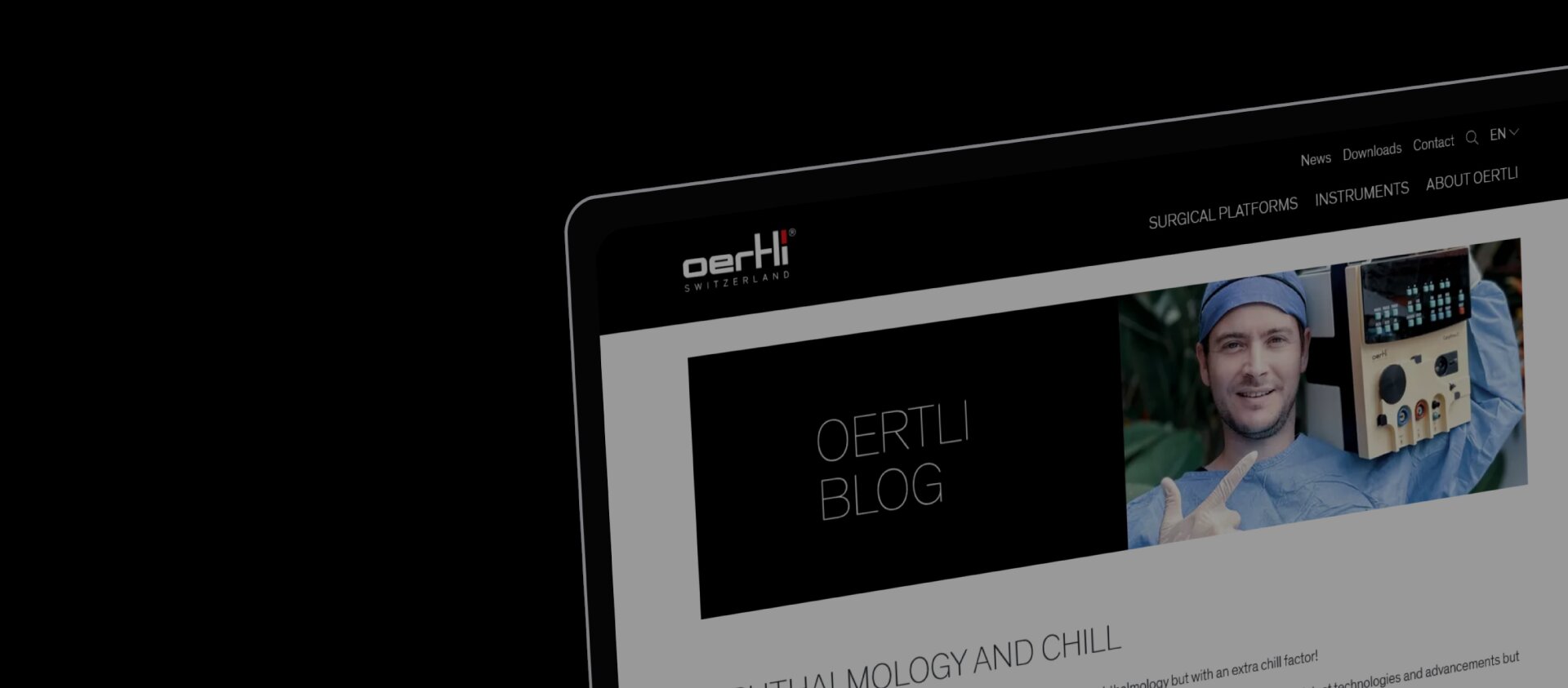
FDA vs. MDR in ophthalmology
Published: 08/02/2024, Reading time: 5 minutes
The ever-evolving med-tech world continually brings innovative solutions, especially in ophthalmology. But for every new development, regulatory scrutiny, chiefly from the Medical Device Regulation (MDR) and the U.S. Food and Drug Administration (FDA), stands as a gateway.
This blog delves into the differences between the MDR and FDA, highlights the challenges faced by ophthalmic companies, and offers a glimpse into Oertli Instrumente AG's approach to navigating this intricate landscape.

What is MDR?
The European Medical Device Regulation (MDR) is a set of rules governing the production and distribution of medical devices in Europe. Instituted in 2017, MDR became fully applicable in May 2021, replacing the previous Medical Device Directive (MDD). Its primary focus is to ensure a higher level of patient safety concerning medical devices.
MDR's Historical Context
The inception of MDR was largely a response to various high-profile scandals involving medical devices in Europe. The regulations aim to offer greater transparency, increased patient safety, and bolstered public trust. A unique feature of the MDR is its emphasis on the complete lifecycle of a medical device, from its conceptualization to post-market clinical follow-up.

Delving into FDA
The FDA, or the U.S. Food and Drug Administration, is an agency within the U.S. Department of Health and Human Services. Its role is expansive, regulating food safety, tobacco products, dietary supplements, and of course, pharmaceuticals and medical devices. For medical devices, the FDA has established classifications that determine the level of control necessary to assure the safety and effectiveness of the device.
FDA's Evolution
Founded in 1906, the FDA's genesis was primarily a response to public safety demands. Over the decades, its regulatory purview has expanded, with the Medical Device Amendments in 1976 marking a significant shift in its approach to device regulation. This introduced a classification system for devices, setting the foundation for the modern regulatory framework.
Implications for Medtech companies in Ophthalmology
-
Understanding Classifications: Devices can range from simple tools to complex machinery. Understanding where a device falls within MDR or FDA classifications determines the rigor of the regulatory path.
-
Clinical Trials: The depth and nature of clinical trials may vary. While the MDR emphasizes post-market surveillance, the FDA has stringent pre-market approval (PMA) requirements for higher-risk devices.
-
Timelines: Gaining approval in the EU under MDR might differ in duration compared to FDA's clearance/approval process.
-
Documentation & Quality Assurance: MDR emphasizes a robust Quality Management System (QMS). On the other hand, the FDA requires thorough documentation, especially if a device is of a higher classification.
Key differences between MDR and FDA
Device Classification:
- MDR: Classifies devices into I, IIa, IIb, and III, based on risk level, with Class III representing the highest risk.
- FDA: Uses a three-tier system: Class I, II, and III, with Class III devices being the highest risk.
Pre-market Requirements:
- MDR: Requires a conformity assessment, which might involve a notified body, especially for higher-risk devices. A Clinical Evaluation Report (CER) is also essential.
- FDA: Depending on the device class, it either requires a Premarket Notification (510(k)) or a more rigorous Premarket Approval (PMA).
Post-market Surveillance:
- MDR: Places strong emphasis on post-market surveillance, mandating manufacturers to collect data on device performance post-launch.
- FDA: While also emphasizing post-market surveillance, the FDA has distinct requirements under its Post-Market Surveillance (PMS) program.
Clinical Trials and Evidence:
- MDR: The clinical evaluation is a continuous process, and manufacturers must update their clinical evaluations periodically.
- FDA: Clinical trials, especially for Class III devices, are rigorous, and the evidence must demonstrate the device's safety and effectiveness.
Transparency and Database:
- MDR: Introduced the European Database on Medical Devices (EUDAMED), which aims to enhance transparency by storing different types of data related to devices.
- FDA: Utilizes databases like MAUDE (Manufacturer and User Facility Device Experience) to store adverse event reports and other device-related experiences.

How Oertli Instrumente AG handles FDA and MDR
At Oertli Instrumente AG, we place a high emphasis on complying with the regulatory requirements of the MDR (Medical Device Regulation) and the FDA (Food and Drug Administration) within our development processes. Interestingly, our existing development practice didn’t require significant adjustments to meet these stringent standards. Our focus for the MDR is on basic safety and performance standards, while for the FDA, we adhere to additional guidelines, particularly in areas such as biological safety and cybersecurity.
Despite the efficient integration of these regulations into our processes, we face challenges: the strict adherence to these standards has led to an extension in the approval times for our new products in Europe, now stretching from the former three months to six to nine months. This development goes hand in hand with a significant increase in approval and testing costs.
It's important to highlight that strict compliance with MDR and FDA requirements doesn't necessarily lead to direct product improvements. However, it underscores the importance of our robust and forward-looking development approach, ensuring we deliver innovative and safe medical instruments that meet both European and American market standards.
Phaco History
Check out our blog about the history in phacoemulsification - and more.
Robotics and AI in ophthalmology
Discover the latest innovations and get all the information you need on this topic.
Glaucoma and HFDS
HFDS shows its love for the eyes by offering a minimally invasive and gentle approach to glaucoma treatment. Check it out.
Oertli data on file
This blog post now accurately references the provided sources in the correct order, ensuring clarity and proper attribution of information. If you have further adjustments or additions, feel free to ask!
This blog was written with the support of artificial intelligence (Chat-GPT).
